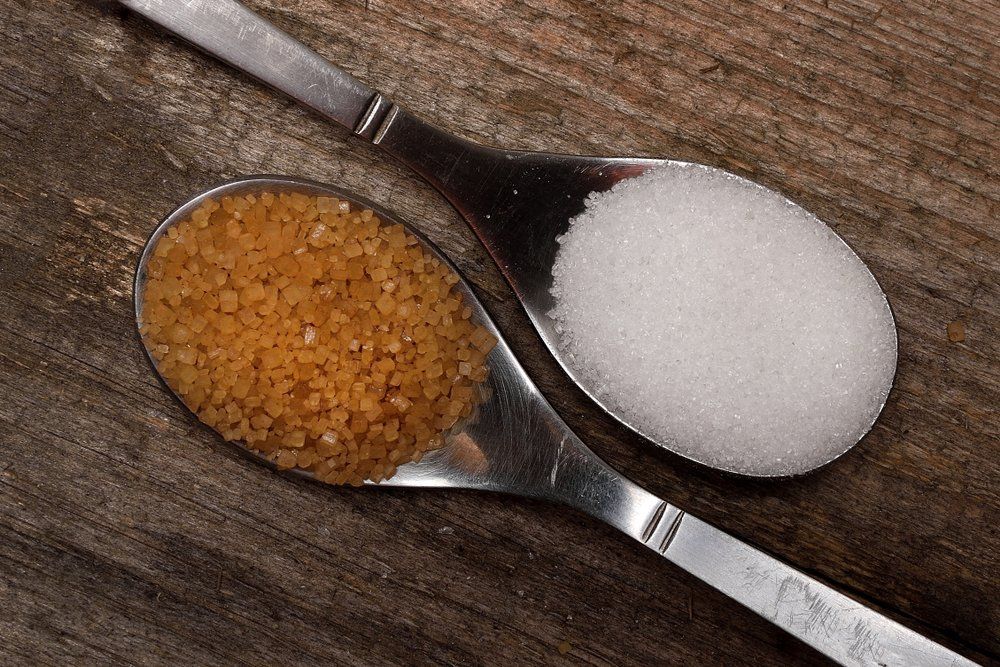Discover the Uses and Perks of Beet Sugar Vs Cane Sugar in Your Daily Diet Regimen
Exploring the distinct high qualities of beet and cane sugar exposes even more than simply their sweetening abilities; it highlights their distinct impacts on health and culinary arts. Beet sugar, understood for its subtle flavor, is often favored in delicate treats, whereas cane sugar, with its hint of molasses, adds richness to robust meals. Each type holds its own nutritional account and glycemic effects, welcoming a much deeper understanding of their duties in a well balanced diet regimen and lasting intake techniques.
Beginning and Manufacturing Procedures of Beet and Cane Sugar

The distinct environments and dirt kinds needed for growing sugar beets and sugarcane add to distinctions in their growing methods and geographic distribution, affecting the business economics and sustainability of their manufacturing. beet sugar vs cane sugar.
Nutritional Comparison In Between Beet Sugar and Cane Sugar
Regardless of originating from different plants, beet sugar and cane sugar are nutritionally really comparable, both mainly being composed of sucrose. Each supplies concerning 4 calories per gram, converting to about 16 calories per teaspoon. Structurally, both sugars are made up of about 99.95% sucrose, with minimal amounts of other substances like dampness and trace minerals, which do not substantially alter their nutritional profiles.

Ultimately, when selecting in between beet sugar and cane sugar based on dietary content alone, both deal the same benefits and downsides as they are essentially types of the same molecule-- sucrose, giving quick power without other nutrients.
Effect On Health: Glycemic Index and Caloric Content
Checking out better right into the effects of beet sugar and cane sugar on health, it is necessary to consider their glycemic index and calorie web content. Both sugars are identified as sucrose, which includes glucose and fructose. This composition leads them to have a similar effect on blood glucose degrees. The glycemic index (GI) of both beet and cane sugar is around 65, classifying them as high-GI foods, which can trigger quick spikes in blood sugar degrees. This is a critical aspect for individuals taking care of diabetes or those attempting to maintain their power degrees throughout the day.
Each kind of sugar includes about 4 calories per gram, making their calorie content equivalent. For those checking calorie consumption, specifically when handling weight or metabolic health and wellness conditions, comprehending this equivalence is essential (beet sugar vs cane sugar). Nonetheless, extreme consumption of any kind of high-calorie, high-GI food can add to health concerns such as excessive weight, heart illness, and insulin resistance.
Environmental and Economic Factors To Consider of Sugar Production
Beyond health influences, the production of beet and cane sugar additionally raises substantial environmental and financial issues. Sugar beet farming has a tendency to call for cooler climates and has a reduced geographical footprint compared to sugar cane, which thrives in tropical areas. Both plants are intensive in terms of water usage and land line of work, potentially leading to deforestation and water deficiency. Economically, the worldwide sugar market is very volatile, influenced by adjustments in international trade plans and aids. Many countries incentivize sugar manufacturing via financial support, skewing market value and influencing small-scale farmers negatively.
Additionally, using pesticides and fertilizers in both beet and cane sugar growing can cause dirt destruction and air pollution, more influencing read this post here biodiversity and local water bodies (beet sugar vs cane sugar). The choice between growing sugar beet or cane frequently rests on local environmental conditions and economic factors, making the sustainability of sugar production an intricate issue
Culinary Applications and Taste Distinctions
While the ecological and financial elements of sugar manufacturing are undoubtedly considerable, the option between beet and cane sugar also affects cooking applications and taste accounts. Beet sugar, acquired from the sugar beet plant, is understood for its incredibly neutral taste. This makes get redirected here it a versatile ingredient in cooking, where it does not change the flavor of other parts. It liquifies quickly and is perfect for use in cakes, cookies, and breads.
Walking stick sugar, removed from sugarcane, usually maintains molasses traces, which pass on a distinct splendor and depth. This minor molasses flavor boosts the complexity of baked products, sauces, and marinades. It is specifically favored in products where a caramel touch is desired, such as in brownies or gingerbread. In addition, the small variant in moisture material in between beet and cane sugar can affect the appearance and consistency of meals, making cane sugar a recommended choice for certain recipes that take advantage of its one-of-a-kind properties.

Final Thought
Finally, both beet and cane sugar have unique origins and production processes, offering comparable dietary profiles with small differences in sodium web content and taste. While their effect on health and wellness, particularly concerning glycemic index and calories, is comparable, the selection in between them typically boils down to ecological, financial elements, and particular culinary demands. Comprehending these aspects can guide customers in making notified decisions visit the site that straighten with their health and wellness goals and flavor preferences.